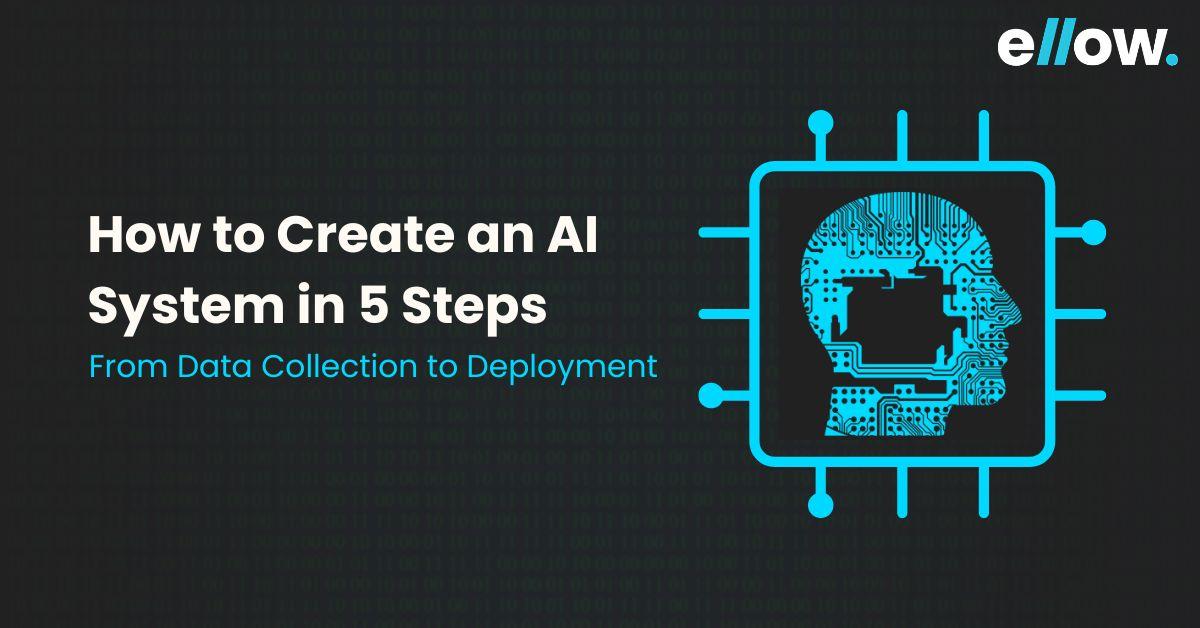Let’s build the future together.
Great ideas need great people. Partner with us to bring your vision to life, or take the first step in your career by joining our team of innovators.

Understanding concepts like artificial intelligence (AI), deep learning, and machine learning has become necessary in 2024.
As entrepreneur Mark Cuban wisely put it, “Artificial intelligence, deep learning, machine learning — whatever you are doing if you don’t understand it — learn it. Because otherwise, you’re going to be a dinosaur within three years.”
These technologies hold immense potential, not just for individuals but for entire industries.
According to a report by Accenture, AI has the potential to increase corporate profitability in 16 industries by an average of 38 percent by 2035.
Over the past decade, we have witnessed a surge in interest and development in AI-related technologies. From autonomous systems winning art contests to writing papers about themselves, the capabilities of AI continue to astound.
But harnessing this power for your own business can be manageable. Despite the complexity of building AI from scratch, many commercial and open-source tools are designed to simplify the process.
With the right approach and resources, integrating AI into your business strategy can become a reality sooner than you think.
“This next generation of AI will reshape every software category and every business, including our own. Although this new era promises great opportunity, it demands even greater responsibility from companies like ours.” – Satya Nadella, CEO at Microsoft, 2023
Additionally, the global AI software market size is expected to reach $126 billion by 2025. AI algorithms can process large amounts of data faster than humans and provide more accurate results.
For example, AI-powered chatbots can handle customer inquiries 24/7, freeing human resources to work on more complex tasks. AI software is already used to analyze customer behavior, predict sales trends, and automate marketing campaigns.
With its potential to revolutionize various industries and drive significant economic growth, investing in AI software presents a compelling opportunity for startups and established companies alike.
For Artificial Intelligence (AI), the choice of programming language plays a crucial role in developing robust and efficient systems. Let us explore some of the prominent languages favored by AI practitioners:
Python emerges as a top contender for AI development due to its versatile nature and extensive ecosystem. Here’s why it stands out:
Julia offers a fresh perspective on AI programming, leveraging its unique features to address specific challenges. Consider the following aspects:
Despite facing competition from Python, R remains a stalwart in the realm of data science and AI. Here’s why it continues to be relevant:
In addition to Python, Julia, and R, other languages such as Scala, Java, and C++ also find utility in AI projects, particularly for their performance and robust ecosystems. Each language brings its strengths to the table, catering to diverse needs within the AI community.
Before diving into the development of your AI system, it is essential to identify the specific problem you aim to solve. Let us break down why this step is crucial and how it sets the direction for your project.
Determines AI Technology: Identifying your problem helps in selecting the right AI technology for your project. Whether it is advanced machine learning algorithms, natural language processing, or computer vision, understanding your problem guides your technology choice.
The foundation of any AI system lies in the data it is trained on. Let us look into the process of gathering and refining data for your AI project.
Data is like fuel for your AI engine. Just like a car needs good-quality fuel to run smoothly, your AI needs the right data to perform effectively. Here’s why:
Data comes in two main types:
| Structured | Unstructured |
| Organized and easily searchable, like a spreadsheet with clear columns and rows. | More complex and not neatly organized, such as transcripts from conversations. |
| Examples: Spreadsheets, databases | Examples: Text documents, audio recordings |
In most AI projects, you will encounter a lot of unstructured data. This type of data requires extra attention and preparation before it can be used effectively.
Gathering and refining data is a crucial step in creating a successful AI system. By ensuring your data is relevant, comprehensive, and free from biases, you lay a solid foundation for your AI’s performance.
In this step, you will choose and develop the algorithm that will power your AI system. Here is what you need to know:
Training the model is like teaching your AI to do its job. Here’s what it involves:
Training the algorithm is a critical step in ensuring that your AI performs its task effectively. It is like teaching a student, the better the training, the better the performance.
After all the hard work of training your AI, it is time to launch it into the world. Here’s what you need to do in this final step:
Before diving into AI development, it is crucial to clearly define the problems you aim to solve. Understand the pain points and challenges, focusing on business objectives, client needs, and any constraints.
Ensure the data used for training AI models is not only relevant but also of high quality. Check for issues such as missing values, biases, outliers, and inconsistencies that might affect model performance.
Regularly assess the performance of your AI models to identify any shortcomings or areas for improvement. Be ready to refine and adjust the models as necessary to maintain optimal performance.
Choose AI models and algorithms that are suitable for the specific characteristics of your data and the complexity of the problem at hand. Consider factors like scalability, interpretability, and computational efficiency.
Integrate ethical considerations throughout the AI development process. Uphold principles such as accountability, transparency, data privacy, and security to ensure responsible and fair AI usage.
Stay abreast of industry standards, regulations, and guidelines relevant to AI development. Ensure compliance with legal requirements to mitigate risks and uphold trust in your AI systems.
Start documenting every stage of the AI development process, from data preprocessing and collection to model training and evaluation. Detailed documentation facilitates transparency, reproducibility, and collaboration.
Ensure that your AI development process is reproducible by documenting dependencies, sharing datasets, and versioning code. This ensures that others can replicate your results and verify the integrity of your AI systems.
One of the fundamental challenges in building AI systems is acquiring and managing sufficient and high-quality data. Insufficient, biased, incomplete, or poor data can significantly reduce the performance of AI models. Ensuring the availability of adequate data to train AI models is crucial but often challenging.
Maintaining the security and privacy of sensitive data used in AI systems is paramount. Addressing issues such as unauthorized access, misuse of personal data, and data breaches is essential to build trust and compliance. Safeguarding data integrity throughout the AI lifecycle is a significant challenge.
Ensuring fairness, transparency, and accountability in AI decision-making processes is a critical challenge. Algorithmic bias, where AI systems exhibit discriminatory behavior, poses ethical and societal risks. Minimizing bias and promoting fairness in AI models require careful consideration and mitigation strategies.
Interpreting the decisions made by AI models, especially complex ones like deep learning models, is challenging. Enhancing the explainability and interpretability of AI systems is essential for building trust and understanding among users. Transparent AI decision-making fosters accountability and user acceptance.
Scaling AI systems to handle large datasets and user interactions efficiently is a significant technical challenge. Optimizing computational resources, algorithms, and architectures is essential to ensure the performance and scalability of AI solutions. Efficient resource utilization is crucial for cost-effective and sustainable AI deployment.
Integrating AI-powered systems into existing infrastructures and workflows can be complex and time-consuming. Ensuring interoperability, compatibility, and seamless integration with diverse systems and platforms is essential for successful AI deployment. Streamlining integration processes facilitates the adoption and usability of AI technologies.
The field of artificial intelligence holds immense potential for developers worldwide. While still emerging, AI is progressing swiftly, paving the way for groundbreaking advancements.
As we witness AI’s evolution, the significance of mastering the techniques for creating and developing AI systems grows ever more apparent.
By embracing this journey of innovation, we can unlock the full capabilities of AI and harness its transformative power to solve complex challenges across various domains.
10 Best Programming Languages for AI Development in 2024
Generative AI vs. Predictive AI: What is the difference?
What are the Components of AI?
An AI system is a computer program or machine that can perform tasks that typically require human intelligence, such as learning, reasoning, problem-solving, and decision-making.
Creating an AI system allows you to automate tasks, gain insights from data, improve efficiency, enhance decision-making processes, and innovate in various fields like healthcare, finance, transportation, and more.
While having coding skills can be beneficial, there are user-friendly AI development tools and platforms available that require minimal coding knowledge. Learning basic programming concepts like Python can greatly aid in AI development.
The key steps to create an AI system typically include defining the problem, collecting and preparing data, choosing and training a suitable algorithm or model, testing and evaluating the model’s performance, and deploying the AI system into production.
The time it takes to create an AI system can vary depending on factors such as the complexity of the problem, the availability and quality of data, the chosen algorithms, and the expertise of the development team. Simple AI projects can be completed in a matter of weeks, while more complex ones may take several months or even years.

How Top SaaS Companies Build Agile Teams with Remote Developers

How to Hire Vetted Remote Developers in a Hyper-Competitive Market

Top 5 Countries to Hire Remote Developers (and Why)
Please feel free to share your thoughts and we can discuss it over a cup of tea.
Get a quote
How Top SaaS Companies Build Agile Teams with Remote Developers

Six Things to Consider When Hiring Remote Talent

ellow.io enters remote hires market with AI-based screening process